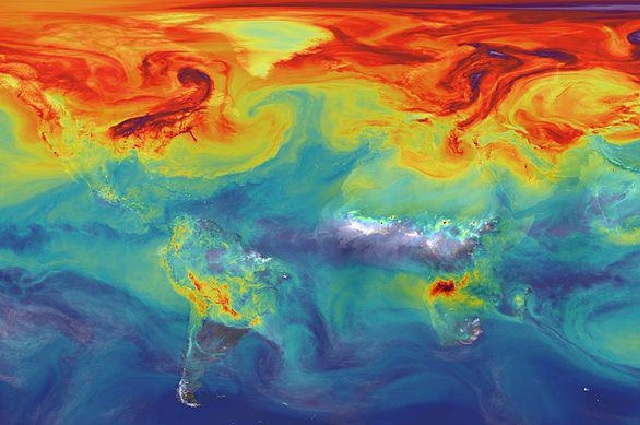
Climate change is complicated … very complicated, hence understanding what will happen in response the the various possible scenarios in the days ahead is still very much an unknown.
Researchers at Turfs university have just published the results of a new study that helps us to grapple with this. Basically it highlights the fact that we must address climate change asap, and that if we don’t, then the future is indeed very bleak because there are not very many viable paths left. It is in many respects akin to a cancer diagnosis – we don’t know the details of how it will play out, there are many possibilities, but we do understand that sitting back and doing nothing is really not an option.
Study: Robust abatement pathways to tolerable climate futures require immediate global action
Published in Nature Climate Change on 11th March, is lays out the details of an analysis of many possible futures.
What is the highlight?
Their comprehensive study of climate change painted over 5 million pictures of humanity’s potential future. What they found is that only a few foretell an Earth that has not severely warmed. In other words, with immediate action and some luck, there are still pathways to a tolerable climate future. As for the vast bulk of possible future pathways … those really are not so good.
We can still take meaningful decisive action, but that opportunity will soon be gone.
What did they do?
That adapted a popular computational climate change assessment model to better account for uncertainties in human activity and the atmosphere’s sensitivity to carbon dioxide levels. This in effect created a novel method for exploring the consequences of different climate change futures. Knowing the consequences leads to better policy decisions, hence work like this feeds into that conversation.
But there are that models already account for stuff like this … right?
Basically yes. Modern assessment models do integrate human activity and climate, yet there are many uncertainties that can affect the outcome of a model run.
Uncertainties?
For instance, uncertainties in population growth, the economy, technological advancement, and the climate’s sensitivity to greenhouse gases all affect the predicted results. What they did was to improve the model described in the study to help identify scenarios which led to a more tolerable climate future. By running it with a wide range of variations for each uncertainty, they could then explore the vast landscape of possibilities.
What Model did they use?
They used an improved version of the Dynamic Integrated model of Climate and the Economy (DICE). DICE is a simple, though widely used Integrated assessment models (IAM). It links a global representation of the economy with a simplified climate emulator.
They improved the climate module in DICE by replacing it with the DOEClim model. DOEClim is an energy-balance model that has a representation of land, the troposphere and ocean dynamics, with shallow mixing and deep diffusivity layers. They also converted the DICE–DOEClim model from a policy optimisation to a policy simulation model. This enabled them to simultaneously explore the full range of uncertainties.
The challenge we face with Climate change is very hard
The massive analysis shows that meeting that target is exceptionally difficult in all but the most optimistic climate scenarios. One pathway is to immediately and aggressively pursue carbon-neutral energy production by 2030 and hope that the atmosphere’s sensitivity to carbon emissions is relatively low, according to the study.
If climate sensitivity is not low, then the window to a tolerable future narrows and in some scenarios, may already be closed.
Our Best bet
Only rapid carbon reduction strategies provide a hedge against the possibility of high climate sensitivity scenarios. Any other choice is simply not rational.
The paper concludes as follows …
our generation has an important responsibility to ensure that coming generations have a tolerable future. It is still, however, a gamble that depends on how sensitive the climate turns out to be and how soon the promises of negative emissions materialize, but we show immediate rapid growth in abatement remains our safest course of action.
Additional observations by the Lead Author
Jonathan Lamontagne, Ph.D., assistant professor of Civil and Environmental Engineering at Tufts University and lead author of the study…
“The consequences of severe warming can be dire. Given this potential for poor outcomes, it can be dangerous to consider only a few expert elicited scenarios, Planners need robust frameworks that broadly explore the uncertainty space for unforeseen synergies and failure mechanisms.”
“Despite massive uncertainties in a multitude of sectors, human actions are still the driving factor in determining the long-term climate. Uncertainty is sometimes interpreted as an excuse for delaying action. Our research shows that uncertainty can be a solid reason to take immediate action
Further Reading
- National Geographic (12th March 2019): Climate study warns of vanishing safety window—here’s why
- NeuroLogica (14th March 2019): Climate Change and the Role of Uncertainty
